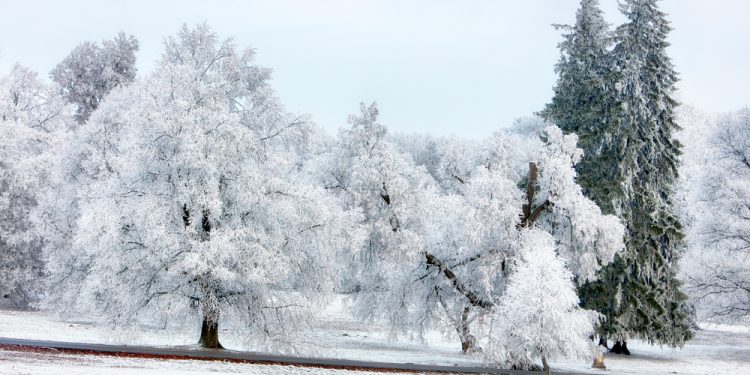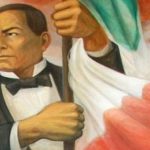
Winter Solstice
For most people, the winter solstice is an astronomical event that tells them they have reached the winter season and the time of the year when nights are longer than days. After this day, also known as the Hibernal Solstice, the days will begin to get longer once again.
That’s why traditionally the winter solstice is a mystical day that many cultures see as a time of rebirth. For many modern paganism practitioners, it’s still a time for practicing surreptitious rituals that honor and show respect for the cycle of life and death.
In the Northern Hemisphere, the winter solstice occurs when the path of the sun is farthest south in the sky, which happens on either December 21st or 22nd every year. In the Southern Hemisphere, the solstice occurs when the sun is the furthest north in the sky, which happens around June 20th or 21st.
Since the sun travels the shortest path across the dome of the sky on this day, it represents the time when there is the least daylight and the longest night in the hemisphere it’s being observed.
The Winter Solstice Throughout History
Neolithic Humans
Ever since the last part of the Stone Age, humans have considered this day of the year to be not only a spiritual time but one that had many practical purposes. It was not only considered to be the day on which the sun was finally triumphant against the night but was also used as a milestone to plan crop rotations and the mating of domestic animals.
Since astronomical events were used to guide human activities at the time, this would have been a significant moment for most Neolithic people. Archaeological evidence reinforces the view that the winter solstice was important to stone-age peoples.
At Neolithic and Bronze Age sites such as Newgrange in Ireland and Stonehenge in England, the importance of the winter solstice is evident. The axes of both of these human constructions are carefully aligned according to a line of sight that points from the winter solstice sunrise at Newgrange and the winter solstice sunset at Stonehenge.
The alignments of these two monuments beg the question: why was the winter solstice so important to early humankind? The answer to that question is quite simple—it was important to their survival.
Early humankind had to keep track of the seasons to know when it was the optimal time for hunting (and eventually planting crops), and how much food they had to store to get them through the cold, barren months of winter. Starvation was a very common phenomenon during the first few months of winter.
The most common famine months in the Northern Hemisphere were from January through April, and in the Southern Hemisphere, it was from July to October. In areas where the climate was more temperate, the Midwinter Festival would have been the last big feast before winter began.
This was a time when cattle were slaughtered, so they wouldn’t have to be fed during the cold months of winter, so it was one of the few times of the year when meat was in plentiful supply. This was also the time when most alcoholic beverages had finally finished their fermentation stage and were ready to be enjoyed by all.
With the availability of meat and drink and the widespread belief that the solstice represented the cycle of life and death, it’s easy to see why so many cultures celebrated some type of Midwinter Festival on this day. It was important to early humans and helped instill in them a feeling that they had at least some control over their circumstances.
The Ancient Romans
The winter solstice was an important time for the ancient Romans as well, and they had several celebrations during this time of year. One of their most famous celebrations was Saturnalia—a holiday that was used to honor the god of agriculture, Saturn.
This celebration would start several days before the winter solstice and it was a very exciting time for most Romans. During Saturnalia, food and drink were plentiful and the traditional Roman social order was set aside for the moment.
It was a time when peasants seemed to be in control of the city when schools and businesses were closed, and when public drinking was not only tolerated but encouraged as well. It was a hedonistic time. Another festival that was common around the time of the winter solstice was Juvenalia.
As some people will probably ascertain from the name of this event, it was a holiday feast dedicated to honoring the children of Rome. Saturnalia and Juvenalia would pair nicely with the birthday of Mithra—another holiday that was celebrated on December 25th. Mithra was the Persian god of light who people believed was an infant god born from a rock.
On this day, people would exchange gifts and it was one of the most sacred days of the year to some Romans. Since all of these holidays revolved around the period between December 20th and December 25th on the Gregorian calendar, it’s believed that it was the reason the early Roman Catholic Church decided to make December 25th the day on which Christmas is celebrated.
It’s believed they chose this date so that the Christian holiday could supplant the pagan rituals of the time. And many of the festivities from these pagan holidays were rolled into Christmas celebrations. This includes the lighting of candles and giving gifts for Christmas.
Over time, Christmas celebrations would usurp other traditions from other pagan holidays including Yule logs from the ancient Norsemen of Scandinavia, and later on, placing and decorating a Christmas tree—something that was borrowed from 16th-century German traditions.
The Inca Empire
During the winter solstice celebration known as Inti Raymi—a Quechua word that means ‘festival of the sun’—the Inca Empire paid homage to the sun god. Because Peru is in the Southern Hemisphere, this placed the celebration in June. For three days before the winter solstice, people would fast.
Just before the dawn of the day of the solstice, they would then go to a ceremonial plaza and wait for the sun to rise. When the sun made its much-anticipated appearance, they would kneel before it and offer it cups of chicha from golden cups. Chicha was a drink made from fermented corn.
The next thing that was done was a sacrificial ritual that included slaughtering animals such as llamas. The event would then be topped off by the Incas using mirrors to light a fire from the sun’s rays.
The festival of Inti Raymi was banned by the Spaniards when they conquered the Inca Empire in the 16th century. However, the practice was revived during the 20th century and continues to be celebrated today. Don’t worry, this festival is no longer observed with animal sacrifices as mock sacrifices are now used in their place.
Customs And Celebrations
Burning The Clocks: This is a particularly interesting festival that was founded in 1994 in Brighton, England. During this festival, residents of the city gather together and craft lanterns made of paper and willow, which they then carry through the streets until they reach the beach, at which point the lanterns are burned to commemorate the end of the year. It occurs during the winter solstice every year and over 2,000 people take part in the festivities.
St. Thomas Day: Although St. Thomas Day is no longer traditionally celebrated on December 21st, it is still used as a reminder for many Christians to start finalizing preparations for Christmas. In many parts of Canada, it was known as “Pie Day” and it was on this day that meat pies were baked to be frozen and used later during Epiphany.








